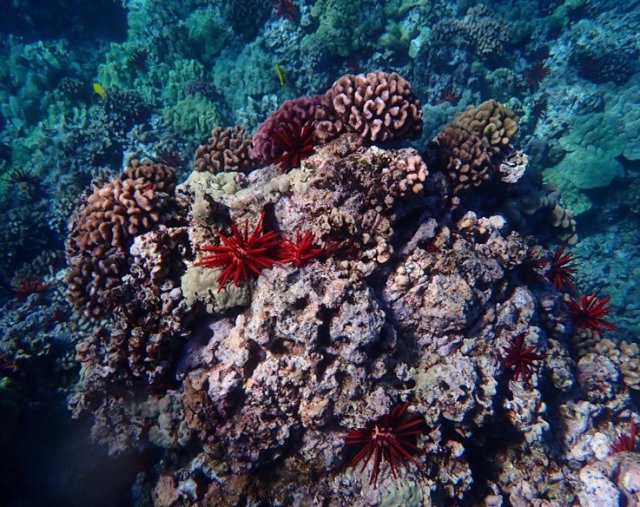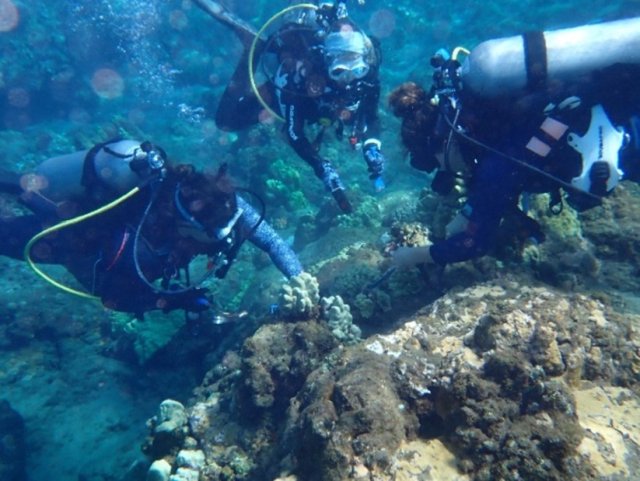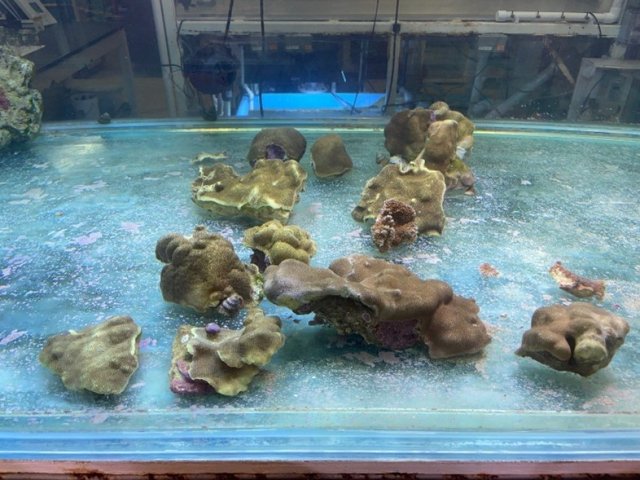Keeping West Maui’s Coral Floral: EPA Scientists Pilot Innovative Watershed Management Research
Published January 23, 2024

West Maui is a mountainous region in Hawai'i impacted by former agricultural plantations. When sediment-laden rainwater runs down the mountains and is washed into surrounding water retention ponds and then out onto reefs, it can cloud the water and interfere with the ability of coral to feed, grow, and reproduce.
EPA scientists are collaborating with the West Maui Ridge to Reef Initiative to explore whether a fibrous compound found on the hard outer skeletons of crabs, lobsters, and other crustaceans can help control fine sediment runoff which threatens the health of coral reefs.
Exploring new possibilities

Coral use their tentacles to capture food but sustain themselves primarily on tiny algae called zooxanthellae that live inside them and give coral their beautiful colors. Together, zooxanthellae and coral have an interdependent relationship; the algae provide coral with food in exchange for a protected environment. However, zooxanthellae also need clear water and sunlight to grow.
EPA scientists and collaborators are exploring whether chitosan—derived from crustaceans— can reduce sediment runoff, which could help clear water near coral. Chitosan is a flocculant, meaning it can promote the clumping of fine particles, like sediment. Researchers want to see if chitosan can help fine sediment clump together so it can more easily settle into water retention ponds, which would result in clearer water. But first, researchers need to make sure the chitosan itself will not be harmful to coral. To do this, they are exposing Hawaiian coral to soil and chitosan in EPA’s Coral Research Facility in Gulf Breeze, Florida.
The facility is EPA’s only corals lab and one of few U.S. research facilities that operates with a recirculating system. This system allows scientists to study stressors to Atlantic, Caribbean, and—most recently—Hawaiian coral. During experiments, scientists can precisely control temperature, salinity, light, and other water quality variations, allowing them to isolate the designated stressors—such as chitosan—that they are researching.

Learning in the lab
EPA's research approach for the chitosan testing includes mimicking heavy rainfall events to replicate sediment runoff scenarios and exploring chitosan dosing to determine best practices. By examining the response of coral and soil samples to chitosan exposure, researchers seek to provide insights into its potential as a watershed management tool.
“Chitosan application in the lab is different from how it would be used it in the field, however, this research will still determine whether or not chitosan has negative impacts on coral” said EPA scientist Cheryl Hankins, lead researcher for the project.
Research results are expected to be available in early 2024 and will shed light on chitosan's compatibility with coral ecosystems in West Maui.

Looking to the future
Numerous natural and man-made threats such as dredging, plastic pollution, higher ocean temperatures, and changing ocean chemistry impact the growth and health of coral reefs worldwide. Increasing understanding about how corals react in different situations and to different substances, like chitosan, will help guide coral protection and hopefully make corals less susceptible to ongoing and potential threats.
The chitosan research project is an example of how EPA is working to address degrading coral reef health and protect both the human and marine communities who rely on coral reef habitats.
This article was written by Sarah Whichello, Oak Ridge Associated Universities Research Participant with EPA, and EPA’s Emily Smith.
Read more:
